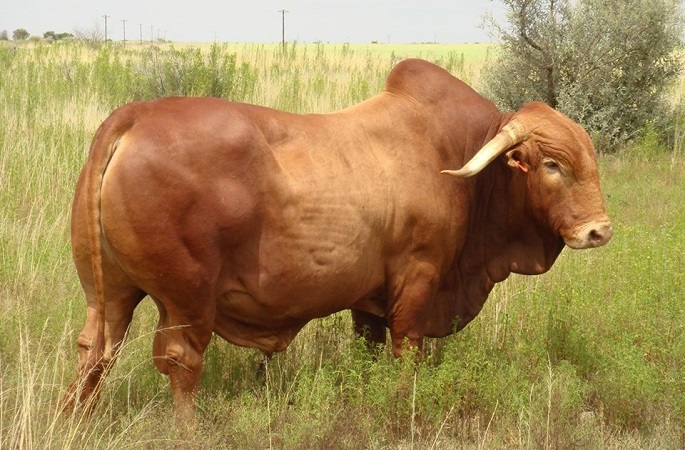

Feeding cattle in order to obtain the right amount of fat in the muscle and in a higher carcass mass, this can be done in many ways is one of the ways farmers can fatten their Beef cattle.
Farmers can use planted pastures for fattening as well as achieve better growth rates.
Some farmers keep animals in pens or small paddocks and feed on high grain diets over 90-150 days before they are taken for slaughter. The animals for fattening can be home produced or purchased from fellow farmers. On arrival at a feeding point, it is good practice to group animals according to sex, size and type and breed because bigger animals tend to bully smaller ones.
Breeds
British and continental breeds such as Angus, Sussex, Hereford, Charolais and Limousine and their crossbreeds are better performing at the feeding points compared to the Zebu types. But for the case of Uganda, Ankole breeds and Zebu crossbreeds, including Friesians are preferred by farmers.
Cows are earlier maturing than steers (castrated male animals) and steers in turn are earlier maturing than bulls.
Heifers (female animals that have never had calves) have a voluntary feed intake 7 per cent lower than that of steers of the same age and breed but have a higher feed conversion ratio. Their corresponding masses are 10 – 15 per cent lower than that of steers, therefore, they should be fed for a shorter time to reduce fat deposition.
Nutrition
The feed rations must be balanced in respect of nutrient content and must be matched to the type of animal fed, which is cost effective to the farmer. Dietary aspects bearing on the success of pen fattening include feed composition, digestibility, palatability and intake.
Energy sources include maize grain, snap corn, sorghum, wheat bran and maize bran. Optimum performance in pens can be achieved by obtaining diets containing 13 per cent crude protein.
For maize-based diets, 20 per cent roughage is required for good performance. It can also be included at higher levels of 30-35 per cent for older animals or laminitis prone animals.
Keeping records of animal performance for monitoring results is important.
Structure
A floor space allocation of 9-14m square is ideal depending on size and breed. However, for large groups of animals, one can go down to a stocking density of 7.5 square metres.
Feeding space allocation should be 30-50cm depending on whether the animals are poled or horned. Feed must be offered free choice and drinking water must be available.
A water reserve that carries two to three days’ supply must be installed in case of pump or borehole failure. Water troughs must be easy to clean and drained.
Diseases
Diseases such as rumenstasis, acidosis, laminitis and urinary calculi can be a problem in feeding points. Prevention is always better and these can be done by spraying recommended acaricides
The services of a veterinarian scientist to advise on disease prevention and the treatment of sick animals must be sought by farmers
Crowded accommodation can cause rapid spread of infectious diseases so it is important not to crowd the animals. Keep the feeding environment clean
 Contact Jaguza Support
Contact Jaguza Support